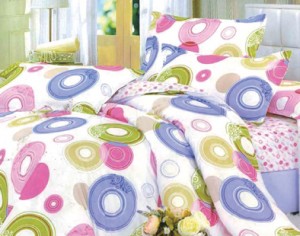By Sachin Nigam, Technical Marketing – Printing, Textile Chemicals India
There are different methods of printing on textile fabric, including direct printing, discharge printing and resist printing. Direct printing is the oldest and simplest method of textile printing, with the lowest percentage of defects. There are several techniques for direct printing, including pigment printing and reactive printing, both of which are used extensively in the textile industry today.
 The advantages of pigment printing are fast sampling, easy printing and fixation processes, high light and dry cleaning fastness, no staining on the white ground, no mercerizing necessary, higher tintorial strength, low percentage of rejections, and easy detection and rectification of rejections.
The advantages of pigment printing are fast sampling, easy printing and fixation processes, high light and dry cleaning fastness, no staining on the white ground, no mercerizing necessary, higher tintorial strength, low percentage of rejections, and easy detection and rectification of rejections.
Reactive printing is considered to be more brilliant and softer than pigment printing, although textile printers prefer the simpler, straightforward pigment printing which tends to have less fabric rejection.
BASF’s superior system
To meet the demands of consumers and textile printers, BASF has developed a system which achieves the superior handle of reactive printing, with the simple process and low cost of pigment printing. It is called the Helizarin Soft System and produces pigment prints with similar brilliancy and handle, and equal or better fastness properties compared to reactive prints.
The system is a combination of a superior binder Helizarin Binder TOW which produces softer prints than regular pigment printing binders; Luprintol CF, a mixture of emulsifiers and fixing agents which gives a good print evenness and improved fastness; and Luprimol VSN, a unique mixture of softeners that delivers a soft handle comparable to reactive printed fabric.
Helizarin Soft System is cost-effective. Comparatively less penetration of pigment print it decreases the chemical cost/mt². With less water consumption, severe washing is not required to remove the thickener from the fabric. The system delivers lower machine rejections and shade rejection rates than standard reactive printing.
Energy consumption for Helizarin Soft System printing is 6.8 MJ/mt² compared to 16.7 MJ/mt² for reactive printing. CO2 emissions from Helizarin soft system is around 60 per cent lower compared to standard reactive printing [based on BASF Eco-Efficiency Analysis].
Finally, the system enables the modern-day textile printer to be highly competitive in the textile industry, with a significant environmental dividend from water and energy savings. BASF is committed to “Putting *FUTURE into Textiles” through innovation and sustainability, thereby contributing to consumer safety, resource saving and climate protection.